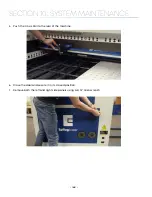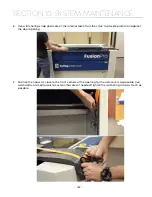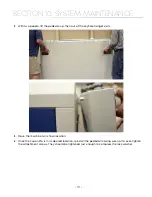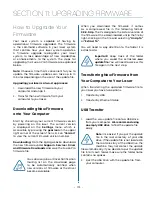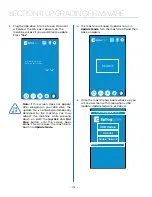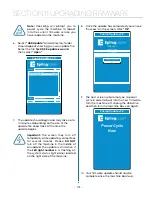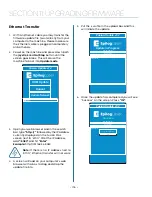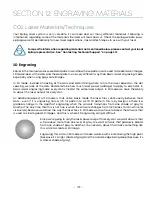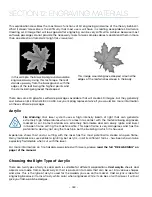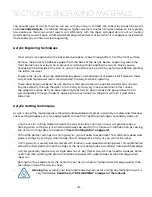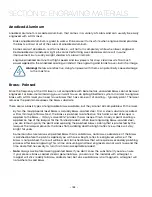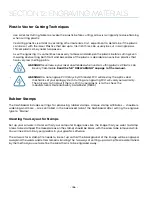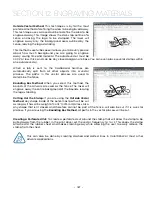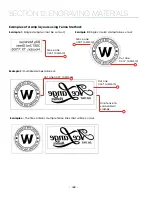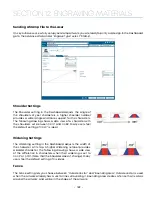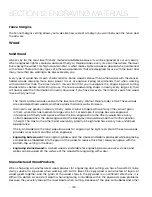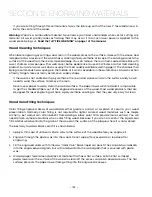
The second type of acrylic that you will use with your laser is formed into sheets by a machine and is
called
extruded acrylic
. It is formed through a higher-volume manufacturing technique, so it is typically
less expensive than cast, and it reacts very differently with the laser. Extruded acrylic will cut cleanly
and smoothly and will have a flame-polished edge when laser cut. But when it is engraved, instead of a
frosted look you will have a clear engraving.
Acrylic Engraving Techniques
• Most acrylic is engraved on the backside to produce a look-through effect from the front surface.
• Remove the protective adhesive paper from the back of the acrylic before engraving. Leave the
front protective cover layer on to prevent scratching while handling the acrylic. Since you are
engraving the backside of the acrylic, you will need to reverse or mirror your artwork before sending
the job to the laser.
• Engrave the acrylic at a high speed and low power. A small amount of power is all it takes to mark
acrylic and high-power levels tend to distort the acrylic when engraving.
• There are a large number of acrylic products that are painted on one side to add color. You can
engrave directly through the paint into the acrylic for a very nice presentation effect. Leave
the speed the same as if you are engraving clear acrylic, and increase the power about 10% to
get completely through the paint. Applying too much power to the paint will melt it and cause
distortion.
Acrylic Cutting Techniques
Acrylic is one of the most popular cutting materials available. It comes in a variety of colors and thickness.
Laser cutting produces very nice edge quality without the need for polishing or secondary clean up.
• Use the Vector Cutting Table to elevate the acrylic before cutting. Air Assist will greatly reduce
flaming when cutting acrylic and should always be used for this material. Information on accessing
the Vector Cutting Table is included in
“Vector Cutting Table” on page 127.
• To find the perfect settings for cutting acrylic, you will need to experiment. Test different speed and
power settings by cutting a small shape from a scrap piece of acrylic you will not be using.
• Cutting acrylic is usually best achieved with relatively slow speed and high power. This combination
allows the laser beam to melt the edges of the acrylic and produce an almost flame-polished edge.
• Acrylics generally require only a single pass to cut, but thicker acrylics may need two passes. Some
users find that spritzing the protective adhesive paper with water produces a better edge when
laser cut.
• Setting the focus distance at the center of your acrylic sheet will produce better edge quality than
focusing on top of the acrylic sheet.
•
Warning!
Never leave your laser unattended when vector cutting any material! Acrylic is
very flammable.
Read the full “FIRE WARNING” on page 1 of the manual.
- 181 -
SECTION 12: ENGRAVING MATERIALS
Summary of Contents for Fusion Pro 32
Page 2: ......
Page 6: ......
Page 14: ...Fusion Pro 48 8 SECTION 1 SAFETY ...
Page 15: ... 9 SECTION 1 SAFETY ...
Page 18: ......
Page 28: ......
Page 60: ......
Page 98: ......
Page 108: ......
Page 132: ......
Page 162: ......
Page 184: ......
Page 202: ......
Page 214: ......
Page 216: ......
Page 242: ......


